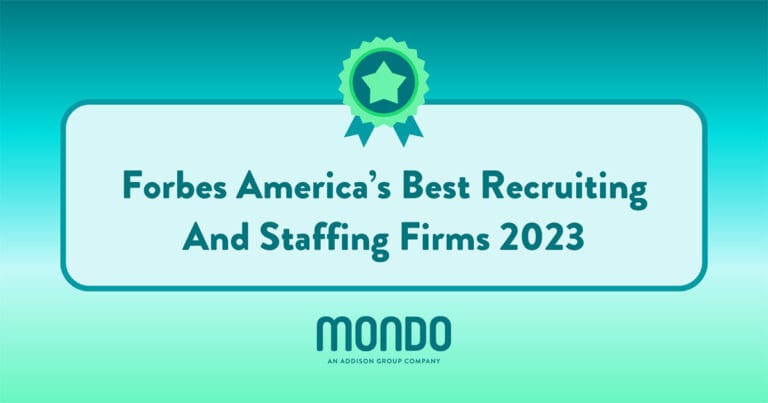Fostering a Listening Culture in Your Organization

Creating a listening culture within an organization is increasingly recognized as crucial in today’s work environment.
Such a culture values and actively seeks out employee input, leading to numerous benefits like increased innovation, improved employee satisfaction, and stronger commitment from the team.
This article explores how embracing a listening culture can transform a workplace, making it more dynamic and responsive to employee needs and market demands.
By fostering an atmosphere where every voice is heard, companies enhance their internal operations and position themselves more competitively in their respective industries.
How to build a listening culture in the workplace
- Establish regular feedback channels
- Promote open communication
- Train leadership team
- Recognize and reward contributions
- Create a safe environment for sharing
- Leverage tools and resources for implementation
1. Establish regular feedback channels
Implementing regular meetings, anonymous suggestion boxes, and digital feedback platforms, such as instant messaging platforms and internal platforms, are effective ways to encourage ongoing employee feedback.
These channels ensure that feedback is not merely received but is actionable, allowing for the continuous and dynamic improvement of workplace practices and policies.
This approach empowers employees to share their insights and suggestions in a comfortable and convenient manner, thereby enhancing the overall effectiveness of the listening culture within the organization.
2. Promote open communication
Advocating for policies where managers actively seek and value input during meetings fosters an environment of respectful communication.
This practice should be part of the larger goal to maintain continuous communication within the team.
It ensures that all team members feel heard and valued, contributing to a more cohesive and productive workplace atmosphere.
3. Train leadership team
Training managers and leaders on the crucial role of active listening and constructive feedback integration is key for reinforcing a listening culture.
Through workshops and specialized training sessions, leaders can develop enhanced communication skills and emotional intelligence necessary for effectively nurturing and supporting their teams.
This equips them with the tools to foster an environment where every member feels valued and heard, significantly impacting the organization’s cohesion and productivity.
4. Recognize and reward contributions
Publicly acknowledging and rewarding contributions can significantly motivate employees to participate actively in innovation and day-to-day problem-solving.
This recognition can be part of larger talent management strategies that align employee happiness with organizational objectives, fostering a workplace culture that values and celebrates individual and team achievements.
Such practices enhance employee engagement and promote a sense of belonging and commitment among team members, driving the organization toward its goals.
5. Create a safe environment for sharing
Ensuring that all team members can express their concerns without fear of judgment or fear of reprisal is fundamental to a thriving workplace culture.
This safety can be achieved through continuous effort to maintain a healthy work-life balance and promote a sense of camaraderie among staff.
Creating such an environment not only supports open communication but also reinforces the company’s commitment to its values and respect for every individual.
6. Leverage tools and resources for implementation
Utilizing technological tools that facilitate feedback gathering and enhancing communication strategies is critical for organizations aiming to build a listening culture.
Additionally, providing educational resources such as books, courses, and workshops can help both leaders and employees better understand the value of a listening culture and how to implement it effectively.
These resources serve as a foundation for continuous learning and improvement, ensuring an inclusive and responsive workplace environment is cultivated.
Benefits of listening to employee ideas
Benefits of listening to employee ideas include increased innovation, enhanced employee engagement, improved decision making, and building trust and loyalty.
Increased innovation
Encouraging employees to share their ideas can lead to innovative solutions that management might not have considered.
When employees feel their opinions matter, they’re more likely to contribute unique insights and creative thinking, driving the organization towards groundbreaking changes and enhancements.
This process cultivates a culture of ownership and pride, further incentivizing innovation and commitment among team members.
Enhanced employee engagement
Listening to employees and valuing their contributions boosts morale significantly, which can lead to reduced turnover rates and higher levels of employee engagement.
This inclusive environment makes employees feel valued and appreciated, which is essential for fostering a positive work culture.
Such a supportive atmosphere enhances job satisfaction and inspires loyalty, creating a strong sense of community within the organization.
Improved decision making
Incorporating diverse perspectives in decision-making processes ensures that all angles are considered, helping to avoid potential blind spots.
This inclusive approach leads to more informed decisions by taking into account a wide range of experiences and insights.
It not only enhances the decision-making quality but also reflects a truly inclusive workplace environment.
Building trust and loyalty
Creating a culture of trust through open and honest communication strengthens the relationship between employees and management.
This openness fosters employee loyalty and contributes to a supportive environment where employees feel secure and valued.
Such a foundation of trust not only improves the workplace atmosphere but also encourages a more engaged and dedicated workforce.
Challenges in cultivating a listening culture
Challenges in cultivating a listening culture can include identifying common barriers and overcoming resistance from management.
Identifying common barriers
Common obstacles to a listening culture include hierarchical structures, lack of time, and pre-existing biases which can hinder effective communication.
Identifying these barriers is the first step toward dismantling them to create a more inclusive work environment.
Overcoming these challenges is essential for fostering an atmosphere where every voice is truly heard and valued.
Overcoming resistance from management
Resistance from management is often one of the biggest challenges in the transition towards a more listening-oriented culture.
To address this challenge, it is crucial to engage in intentional efforts to educate organizational leaders about the myriad benefits that active listening can confer upon both employee performance and the broader organizational growth of the company.
Demonstrating the tangible improvements in innovation, engagement, and decision-making that result from a listening culture can help to dismantle this resistance and foster a more inclusive environment.
Examples of companies with an employee listening culture
Atlassian
This company has created an environment where leadership is accessible beyond formal meetings, which fosters open communication and collaboration.
Their leaders prioritize teamwork and employee input, which is evident from the management style of engaging in casual conversations and being open to feedback throughout the decision-making process.
This approach has helped them build trust and foster a strong team-oriented culture.
Tavistock Group
Faced with the challenge of managing hybrid work setups post-pandemic, Tavistock implemented the OfficeRnD Hybrid platform to facilitate seamless coordination of physical and virtual workspaces.
This technology allowed for better collaboration and resource management, significantly reducing real estate costs while enhancing in-person collaboration.
The adoption of such employee-focused technology solutions underlines the importance Tavistock places on listening to and addressing employee needs in the changing workplace landscape.
Plentymarkets
In response to logistical challenges of a hybrid working model, Plentymarkets used software solutions to optimize their office space effectively.
Their proactive approach in using technology to manage employee needs and enhance collaboration has proven successful, emphasizing their commitment to listening and adapting to employee feedback for better workplace functionality.
Workplace from Meta
This platform highlights the critical role of ’employee voice’ in building a culture of trust and engagement.
By encouraging open communication and ensuring that feedback is not just heard but acted upon, companies can significantly enhance employee satisfaction and retention.
The platform also provides tools and discussions that emphasize the practical steps needed to integrate employee feedback into a business’s operational and strategic framework.
Building a listening culture to enhance employee engagement
Adopting a listening culture is not just a one-time initiative but an ongoing process that can profoundly impact employee engagement and satisfaction.
By taking definitive steps towards cultivating this culture, organizations can enjoy sustained benefits, including higher innovation, stronger employee loyalty, and a more agile response to market changes.
Leaders are encouraged to commit to these practices, ensuring that their actions consistently reflect the organization’s dedication to a growth mindset, employee well-being, and opportunities for improvement.
This commitment by leadership will serve as the backbone for a thriving corporate culture, fostering a more inclusive, responsive, and dynamic workplace environment.
Looking to hire top-tier Tech, Digital Marketing, or Creative Talent? We can help.
Every year, Mondo helps to fill over 2,000 open positions nationwide.
More Reading…
- Machine Learning vs AI: Recruiting and Hiring the Right Talent
- How to Modernize Employee Recognition for the Digital Age
- AI Overwhelm & 3 Things You Can Do Now to Get Started
- The Rise of Autonomous Robotics, With Examples
- Breaking Down Silos: 11 Ways to Improve Interdepartmental Communication
- Leveraging AI for System Integration & the Demand for AI Talent
- Leading with Empathy: The Key to Effective Remote Leadership
- The Ripple Effects of Meta’s AI Hiring Blitz on the Tech Job Market
- AI You Didn’t Realize Your Organization Is Already Using
- Green Tech: 5 Sustainability Innovations in the Tech Sector
- Quantifying a Project Manager’s Success to Advocate for Hiring
- Breaking the Code: How Women are Shaping the Future of Cybersecurity
- Highest Paid Data Science Roles & Top Salaries



